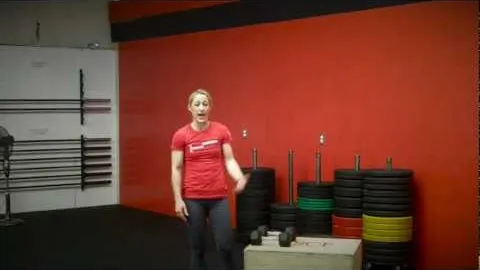
In recent years, weighted step-up exercises have gained popularity among fitness enthusiasts and athletes for their ability to effectively build strength, improve balance, and increase overall conditioning. This exercise involves stepping onto an elevated platform or bench while holding weights in your hands, making it a powerful tool for full-body training. In this article, we will explore the numerous benefits of weighted step-up exercises and how they can enhance your fitness routine.
Strength development: Weighted step-up exercises primarily target the lower body muscles, including the quadriceps, hamstrings, glutes, and calves. By incorporating weights, you increase the resistance on these muscles, leading to greater strength gains over time. This exercise also engages the core muscles, helping to improve stability and overall body strength.
Functional movement: The step-up exercise mimics everyday activities that require stepping onto or off of elevated surfaces. By training this movement pattern, you enhance your body's ability to perform everyday tasks such as climbing stairs or stepping up onto a curb. This translates to improved overall balance, stability, and coordination.
Cardiovascular conditioning: Weighted step-ups can be performed in a high-intensity manner, elevating your heart rate and providing an effective cardiovascular workout. By incorporating these exercises into your routine, you can improve your cardiovascular fitness, burn calories, and enhance your endurance levels.
Joint stability: Weighted step-up exercises not only strengthen the muscles surrounding the joints but also help improve joint stability. This is crucial for injury prevention, as strong stabilizing muscles can reduce the risk of joint-related injuries, such as sprains or strains.
Variety and progression: Weighted step-ups offer a wide range of variations and progressions, allowing you to customize your workout based on your fitness level and goals. You can increase the weight, height of the platform, or incorporate additional movements to challenge your body and continually progress.
To perform a weighted step-up exercise, follow these steps:
To maximize the benefits and safety of the weighted step-up exercise, keep the following tips in mind:
Weighted step-up exercises offer a multitude of benefits to individuals looking to improve their strength, conditioning, and overall fitness levels. By incorporating this exercise into your routine, you can build lower body strength, improve joint stability, enhance cardiovascular conditioning, and develop functional movement patterns. Remember to always prioritize proper form and gradually progress to more challenging variations to continue reaping the benefits of this effective exercise. Consult with a fitness professional if you have any concerns or questions regarding your individual fitness goals and needs.
If you're looking for a gym, fitness club or yoga studio, you've come to the right place.
You can find information about gyms in your area. Browse catalog of gyms and find gyms with classes which are you looking for.
On gym page you can find simple information like address, phone or website. You can find list of available classes. You can check availability of personal training or small group classes. On place page you can also see information about open hours.
You can find gyms near you with amenities, courts, studios and equipments.
Use our map to find gym at your city or district.
In Gym Navigator you can find list of exercises with movies for many body parts.
You can browse exercises catalog and find exercises the best of you.
You can also find exercises grouped into workout plans, which you can use to improve you body. Each routine show you exercises one by one and give you possibility to count you progress and count down rest time.